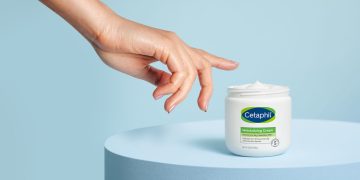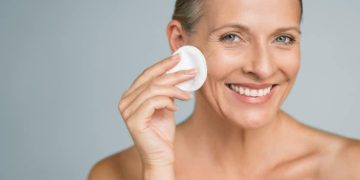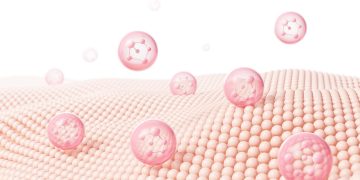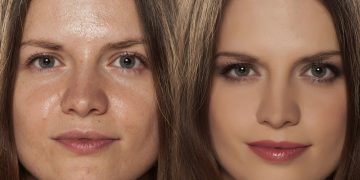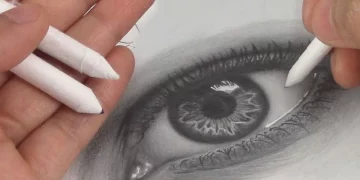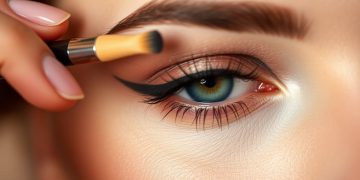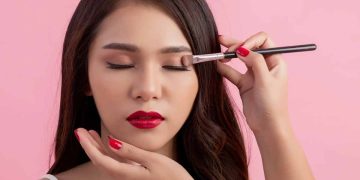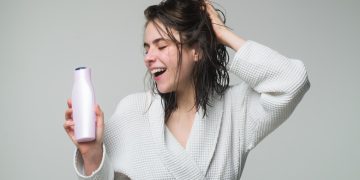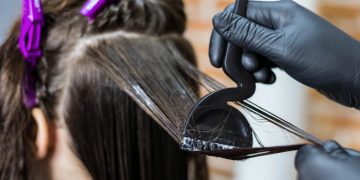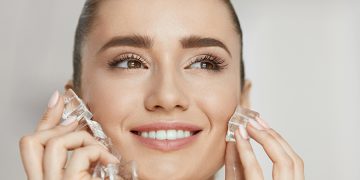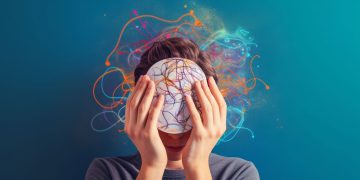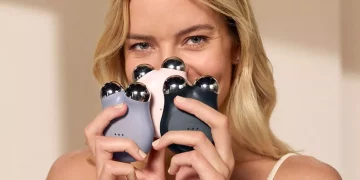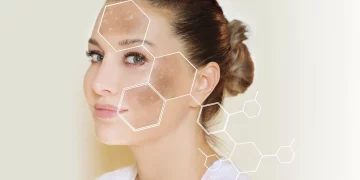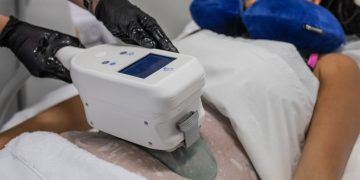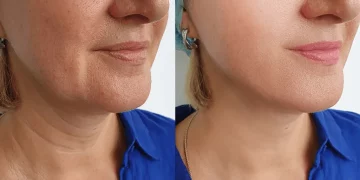Introduction
In recent years, Artificial Intelligence (AI) has transformed various industries, from healthcare and finance to beauty and personal care. One of the most promising innovations within the beauty sector is the rise of AI-powered haircare devices, which claim to provide precise scalp diagnoses and offer personalized hair care solutions. These devices promise to use advanced algorithms and sensors to detect scalp conditions such as dryness, oiliness, dandruff, and hair thinning, providing users with tailored advice on how to address their specific needs.
But how accurate are these AI devices in diagnosing scalp health issues? Can they truly replace professional dermatologists or trichologists? In this article, we will explore the functionality of AI-powered haircare devices, their potential benefits, limitations, and whether they can live up to the hype of accurately diagnosing scalp problems.
1. The Rise of AI in Beauty and Haircare
The beauty industry has seen a significant shift toward technology-driven solutions, especially as consumers increasingly demand personalized products that cater to their unique needs. The growth of AI-powered beauty devices and skin analysis tools has provided an innovative approach to addressing skin and scalp concerns at home.
For haircare, AI-powered devices have the ability to:
- Assess scalp condition (e.g., dryness, excess oil, dandruff, hair thinning).
- Provide real-time analysis of hair health.
- Recommend specific treatments or products based on individual needs.
These devices are often equipped with sensors, cameras, or imaging technology that can assess the health of the scalp and hair in ways that traditional methods may not. Some advanced models even come with smart algorithms that track changes over time, offering insights into how scalp health evolves in response to treatments.
2. How Do AI Haircare Devices Work?
AI haircare devices generally operate using a combination of visual analysis, sensors, and data processing. Here’s how they typically work:
a. Visual and Image Analysis
Many AI haircare devices use high-resolution cameras or microscopic imaging technology to capture images of the scalp and hair. These images are then analyzed using AI algorithms that can detect subtle changes in scalp conditions, such as the presence of dandruff, clogged pores, hair density, or oil production.
- AI algorithms are trained to recognize patterns that may indicate potential scalp issues. For example, they may detect signs of seborrheic dermatitis, psoriasis, or excessive oiliness by analyzing the texture and appearance of the scalp.
- The camera may capture the hair follicle density, helping detect issues like hair thinning or even early stages of hair loss.
b. Sensor Technology
In addition to visual analysis, some AI-powered devices are equipped with sensors that measure various aspects of scalp health, such as:
- Humidity and oil levels: Sensors can detect whether the scalp is too dry or oily, helping determine the right treatment.
- Temperature: Changes in scalp temperature may indicate underlying conditions like inflammation or poor circulation.
- Scalp pH level: A scalp’s pH can affect its health, and imbalances can lead to problems like dandruff or irritation.
These sensors provide a comprehensive analysis of the scalp’s environment, allowing the AI device to make informed recommendations.
c. Data-Driven Recommendations
Once the AI analyzes the data collected from visual analysis and sensors, the device typically provides personalized recommendations on how to address any detected issues. This could include:
- Recommending specific shampoos, conditioners, or serums that target the identified problem (e.g., anti-dandruff shampoos for dry or flaky scalps).
- Suggesting changes to hair care routines, such as more frequent washing, deep conditioning treatments, or adjustments to styling practices.
- Offering lifestyle tips to address environmental factors like pollution, which can also affect scalp health.
Some advanced AI haircare devices also offer a long-term monitoring feature, where users can track changes in their scalp health over time and adjust their treatments accordingly.
3. Can AI Devices Accurately Diagnose Scalp Issues?
While AI technology holds great promise in personal care, it is important to assess how accurate these devices are when it comes to diagnosing scalp health problems.
a. The Precision of AI in Detecting Scalp Conditions
AI-powered haircare devices rely heavily on visual recognition and pattern recognition algorithms, which have been trained using large sets of data to identify specific scalp conditions. This means that these devices can be accurate in identifying common scalp issues, such as:
- Dandruff: Devices can detect dry flakes or oil buildup.
- Hair Thinning or Loss: AI can analyze hair follicle density and thickness, which can help detect early signs of hair thinning.
- Oiliness or Dryness: Sensors can identify excess sebum or dry patches on the scalp.
However, while AI can be precise in identifying visible symptoms, its ability to make a comprehensive diagnosis is still limited. For example:
- Complex Conditions: Scalp issues like seborrheic dermatitis, eczema, or psoriasis might require medical expertise to diagnose properly, as these conditions often involve more than just visual or sensor-based data. They may need further medical evaluation, including biopsy or skin scraping tests.
- Misinterpretation of Data: AI algorithms are trained on large datasets, but there is always the potential for errors in interpretation, particularly if the device is not calibrated for an individual’s unique hair and scalp characteristics.
- External Factors: Certain scalp conditions might be triggered by factors that cannot be measured by the device, such as hormonal imbalances, stress, or dietary deficiencies.
b. The Limitations of AI Diagnosis
While AI-powered devices are increasingly accurate in identifying superficial scalp issues, they still have limitations when it comes to diagnosing complex problems that require an in-depth understanding of underlying medical conditions.
For example:
- Scalp sensitivity and irritation might be difficult for a device to detect purely through visual or sensor-based measurements.
- Hair loss might be attributed to genetic factors, which a device may not be able to detect with the same level of accuracy as a trichologist (a scalp specialist).
In summary, while AI devices can provide useful insights into scalp health, they are not a substitute for professional diagnoses. They can, however, be an excellent tool for early detection and preventative care, allowing users to make informed decisions about their hair care routine and seek professional advice if necessary.

4. Benefits of AI Haircare Devices
Despite the limitations, AI-powered haircare devices offer several benefits that can significantly improve hair and scalp health management:
a. Personalized Haircare
AI devices provide highly personalized recommendations based on individual scalp conditions. By assessing factors such as oiliness, dryness, and hair density, these devices can suggest tailored solutions that are more likely to be effective than generic products.
b. Convenience and Accessibility
These devices offer users the ability to track scalp health and get personalized advice from the comfort of their own home, without the need for visits to a dermatologist or trichologist. This convenience makes it easier for individuals to address scalp concerns proactively.
c. Long-Term Monitoring
By using AI-powered devices over time, users can monitor changes in their scalp health, helping them adjust their hair care routines as their needs evolve. This long-term tracking feature helps build a holistic understanding of how their scalp reacts to different treatments, products, and environmental factors.
d. Empowering Consumers
AI-powered devices empower consumers by giving them more control over their scalp and hair health. Rather than relying solely on professional consultations, users can make informed decisions based on real-time data, improving their overall hair care outcomes.
5. Conclusion: AI-Powered Devices as a Complementary Tool for Scalp Health
AI-powered haircare devices are undoubtedly an exciting advancement in the beauty and personal care industry. While they hold significant potential for diagnosing common scalp conditions and providing personalized care, they are not yet capable of fully replacing professional medical expertise.
These devices can serve as a useful tool for early detection of scalp health issues, offering valuable insights and recommendations to improve hair and scalp care routines. However, for more complex conditions or serious hair health issues, consulting with a professional dermatologist or trichologist remains the best course of action.
In the future, as AI technology continues to evolve, these devices may become even more accurate and effective at diagnosing a wider range of scalp conditions. For now, they are best used as part of a comprehensive scalp care strategy, alongside regular check-ups with hair and skin care professionals.

